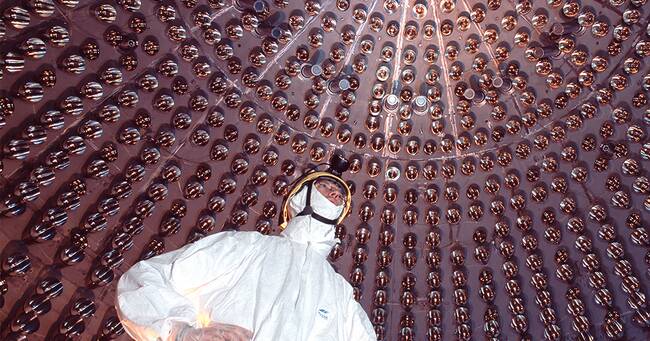Every second, many billions of neutrinos rush right through your thumbnail at the speed of light.
They left the middle of the sun just eight minutes ago and carry information about what's going on inside.
The problem is that they are so hard to stop.
- A neutrino can pass a light year of lead without being absorbed, says Claes Fransson who is an astrophysicist at Stockholm University.
Neutrins, which are so small and unexplored that they are sometimes called ghost particles, have an extremely small probability of colliding with other particles.
But sometimes it happens and then big experiments are required to capture them.
Underground experiment
In the Apennine massif in central Italy is the Laboratori Nationali del Gran Sasso, an underground facility.
A particle physics experiment, Borexino, has been going on there for many years, with the aim of capturing neutrons from the sun.
Now, for the first time, they have detected solar neutrinos that have been formed in a type of nuclear reaction never seen before in the sun.
The discovery is published in this week's Nature.
- It is a fantastically well-conducted experiment that provides completely new information about what it looks like inside the sun and it is of course very interesting, says Claes Fransson.
Neutrins are messengers
The neutrinos are formed during nuclear reactions inside the innermost part of the sun.
Hydrogen combines to form helium while releasing energy.
It is the energy that makes the sun shine.
During the nuclear reaction, a handful of neutrinos are sent out.
It becomes a messenger who can tell you what's going on in there.
Now the physicists in the Borexino experiment have discovered that there is also a type of nuclear reaction that has previously been assumed to only take place in stars larger than the sun.
It is called the CNO cycle, and means that carbon, nitrogen and oxygen are catalysts that help in the process.
Carbon, nitrogen and oxygen
The neutrinos in the Borexino experiment now reveal that one percent of the sun's energy comes from that type of nuclear reaction, and at the same time one can determine how much carbon, nitrogen and oxygen are in the center of the sun.
- This is one of the most important discoveries about how the sun produces its energy, says Claes Fransson.

